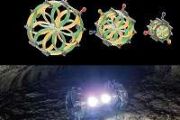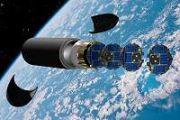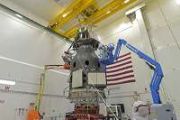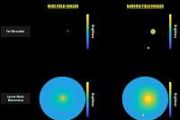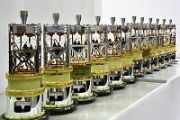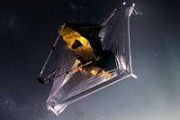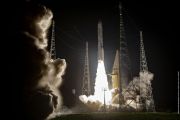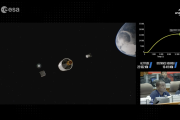
Copernical Team
Gilmour Space Sets March 15 Launch Window for Eris Orbital Rocket
 Gold Coast and Bowen, Australia - February 24, 2025 - Gilmour Space Technologies has confirmed that its first orbital rocket, Eris, is set for launch no earlier than March 15. This milestone marks Australia's first domestically designed and built rocket attempting to reach orbit.
The announcement follows the final regulatory approvals from the Civil Aviation Safety Authority (CASA) and Air
Gold Coast and Bowen, Australia - February 24, 2025 - Gilmour Space Technologies has confirmed that its first orbital rocket, Eris, is set for launch no earlier than March 15. This milestone marks Australia's first domestically designed and built rocket attempting to reach orbit.
The announcement follows the final regulatory approvals from the Civil Aviation Safety Authority (CASA) and Air Drilling into Mars
 Video:
00:03:06
Video:
00:03:06
The ExoMars Rosalind Franklin rover will drill deeper than any other mission has ever attempted on the Red Planet.
The third episode in the series shows how the rover will extract, collect and analyse martian samples in a high-fidelity simulation.
Rosalind Franklin will be the first rover to reach a depth of up to two metres deep below the surface, acquiring samples that have been protected from harsh fsurface radiation and extreme temperatures.
The drill system combines multiple precission mechanisms in an intricate automated sequence. It uses three extension rods that connect tor form a two-metre “drill string”.
As the rover
Illuminating the Inner Workings of the Proton
 A team of scientists has successfully mapped the intricate forces at play inside a proton, revealing with unprecedented precision how quarks-its fundamental components-react when exposed to high-energy photons.
The international collaboration, which includes researchers from the University of Adelaide, is focused on uncovering the structural complexity of subatomic particles to gain deeper
A team of scientists has successfully mapped the intricate forces at play inside a proton, revealing with unprecedented precision how quarks-its fundamental components-react when exposed to high-energy photons.
The international collaboration, which includes researchers from the University of Adelaide, is focused on uncovering the structural complexity of subatomic particles to gain deeper Unlocking the secrets of fusion's core with AI-enhanced simulations
 Creating and sustaining fusion reactions - essentially recreating star-like conditions on Earth - is extremely difficult, and Nathan Howard PhD '12, a principal research scientist at the MIT Plasma Science and Fusion Center (PSFC), thinks it's one of the most fascinating scientific challenges of our time. "Both the science and the overall promise of fusion as a clean energy source are really int
Creating and sustaining fusion reactions - essentially recreating star-like conditions on Earth - is extremely difficult, and Nathan Howard PhD '12, a principal research scientist at the MIT Plasma Science and Fusion Center (PSFC), thinks it's one of the most fascinating scientific challenges of our time. "Both the science and the overall promise of fusion as a clean energy source are really int SLAC to advance fusion target technology through DOE FIRE Collaboratives
 Researchers at the Department of Energy's SLAC National Accelerator Laboratory will play a key role in the newly launched Fusion Innovative Research Engine (FIRE) Collaboratives, a DOE initiative designed to connect foundational scientific research with the growing needs of the fusion energy sector. As part of this effort, the DOE has committed $107 million in funding to support six specialized
Researchers at the Department of Energy's SLAC National Accelerator Laboratory will play a key role in the newly launched Fusion Innovative Research Engine (FIRE) Collaboratives, a DOE initiative designed to connect foundational scientific research with the growing needs of the fusion energy sector. As part of this effort, the DOE has committed $107 million in funding to support six specialized ESA Red Cross alliance advances crisis response
 The European Space Agency (ESA) in collaboration with the International Committee of the Red Cross (ICRC) has signed a Memorandum of Intent to leverage space technology for global humanitarian aid. The alliance merges ESA's space expertise with ICRC's humanitarian reach to develop innovative solutions that support communities impacted by disasters and conflicts in Europe and beyond.
In cri
The European Space Agency (ESA) in collaboration with the International Committee of the Red Cross (ICRC) has signed a Memorandum of Intent to leverage space technology for global humanitarian aid. The alliance merges ESA's space expertise with ICRC's humanitarian reach to develop innovative solutions that support communities impacted by disasters and conflicts in Europe and beyond.
In cri INFLECION project to revolutionize maritime security
 The European Space Agency (ESA) has partnered with AAC Clyde Space to launch the first phase of INFLECION, a satellite constellation project aimed at transforming Maritime Domain Awareness. This initiative will bolster safety, operational efficiency, regulatory compliance, and environmental sustainability across the maritime sector.
Given that nearly 90% of global trade moves via maritime
The European Space Agency (ESA) has partnered with AAC Clyde Space to launch the first phase of INFLECION, a satellite constellation project aimed at transforming Maritime Domain Awareness. This initiative will bolster safety, operational efficiency, regulatory compliance, and environmental sustainability across the maritime sector.
Given that nearly 90% of global trade moves via maritime Blue Moon mission drives NanoAvionics SuperSharp thermal imaging innovation
 Based in the UK and a member of the Satlantis group, SuperSharp has chosen the Kongsberg NanoAvionics MP42 microsatellite platform for its pioneering Blue Moon mission. This unique Thermal InfraRed project will carry the company's flagship HIBISCUS instrument weighing 80kg and is scheduled to launch in the second half of 2026 aboard SpaceX Transporter rideshare.
Blue Moon is set to redefin
Based in the UK and a member of the Satlantis group, SuperSharp has chosen the Kongsberg NanoAvionics MP42 microsatellite platform for its pioneering Blue Moon mission. This unique Thermal InfraRed project will carry the company's flagship HIBISCUS instrument weighing 80kg and is scheduled to launch in the second half of 2026 aboard SpaceX Transporter rideshare.
Blue Moon is set to redefin Pierogi Make Their Debut Aboard the International Space Station
 ESA project astronaut Slawosz Uznanski-Wisniewski is bringing a unique culinary touch to the International Space Station (ISS) as part of the upcoming Axiom Mission 4. For the first time, traditional Polish dumplings, known as pierogi, will be part of the menu in orbit.
Slawosz collaborated with a well-known chef and a Polish family-owned company to create a menu that captures the essence
ESA project astronaut Slawosz Uznanski-Wisniewski is bringing a unique culinary touch to the International Space Station (ISS) as part of the upcoming Axiom Mission 4. For the first time, traditional Polish dumplings, known as pierogi, will be part of the menu in orbit.
Slawosz collaborated with a well-known chef and a Polish family-owned company to create a menu that captures the essence Eyeing China and US, EU hopes clean tech boost will spark growth
 How do you solve Europe's lagging economic growth and reverse its industrial decline? That is the challenge the EU faces as the bloc comes under fierce pressure from US President Donald Trump's tariffs and a rising China.
Europe's answer to bring its economy back to life is a battery of measures to be announced next week including boosting its clean tech sector and supporting energy-intensiv
How do you solve Europe's lagging economic growth and reverse its industrial decline? That is the challenge the EU faces as the bloc comes under fierce pressure from US President Donald Trump's tariffs and a rising China.
Europe's answer to bring its economy back to life is a battery of measures to be announced next week including boosting its clean tech sector and supporting energy-intensiv 


